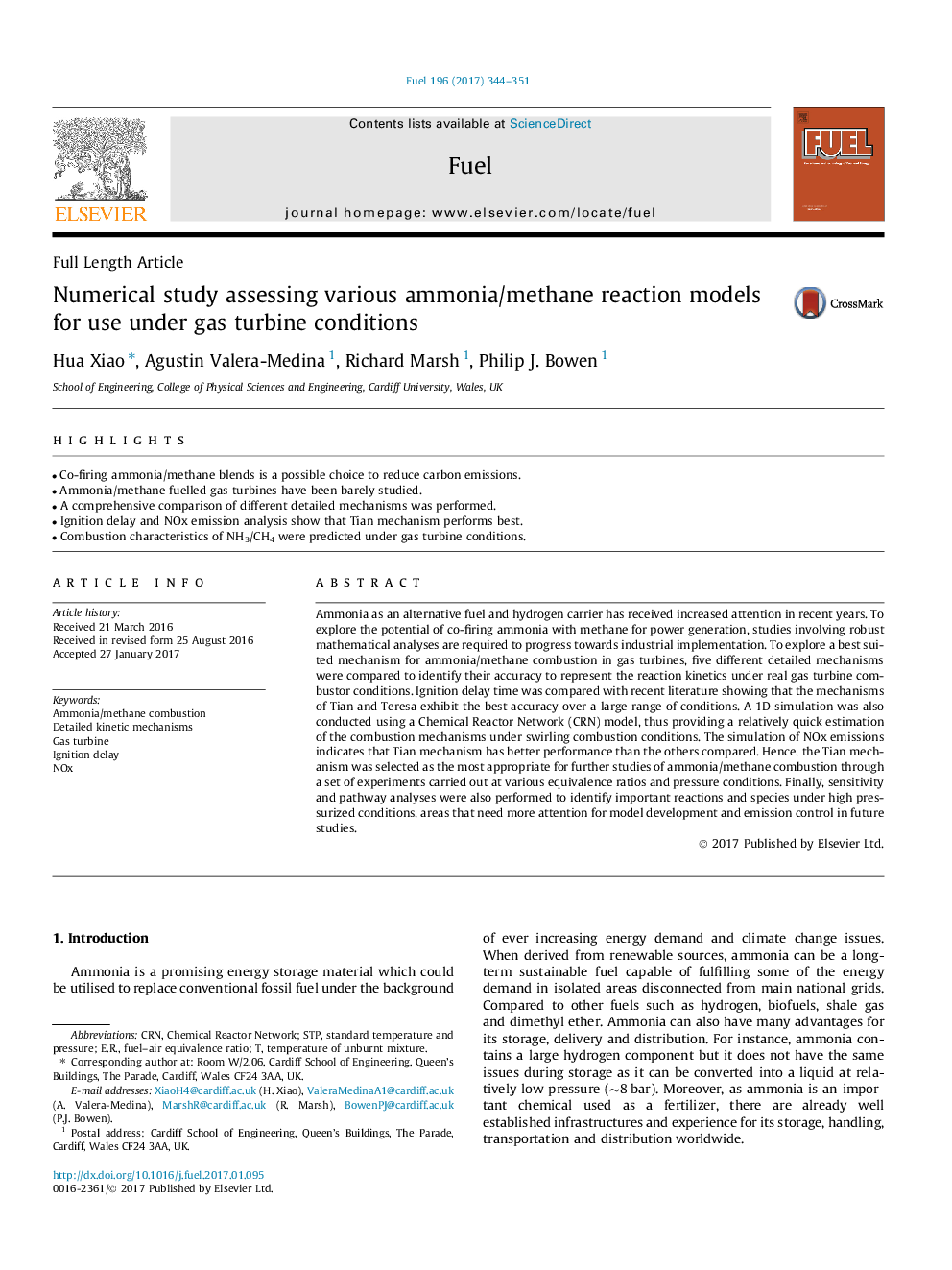| Article ID | Journal | Published Year | Pages | File Type |
|---|---|---|---|---|
| 6475068 | Fuel | 2017 | 8 Pages |
Abstract
Ammonia as an alternative fuel and hydrogen carrier has received increased attention in recent years. To explore the potential of co-firing ammonia with methane for power generation, studies involving robust mathematical analyses are required to progress towards industrial implementation. To explore a best suited mechanism for ammonia/methane combustion in gas turbines, five different detailed mechanisms were compared to identify their accuracy to represent the reaction kinetics under real gas turbine combustor conditions. Ignition delay time was compared with recent literature showing that the mechanisms of Tian and Teresa exhibit the best accuracy over a large range of conditions. A 1D simulation was also conducted using a Chemical Reactor Network (CRN) model, thus providing a relatively quick estimation of the combustion mechanisms under swirling combustion conditions. The simulation of NOx emissions indicates that Tian mechanism has better performance than the others compared. Hence, the Tian mechanism was selected as the most appropriate for further studies of ammonia/methane combustion through a set of experiments carried out at various equivalence ratios and pressure conditions. Finally, sensitivity and pathway analyses were also performed to identify important reactions and species under high pressurized conditions, areas that need more attention for model development and emission control in future studies.
Keywords
Related Topics
Physical Sciences and Engineering
Chemical Engineering
Chemical Engineering (General)
Authors
Hua Xiao, Agustin Valera-Medina, Richard Marsh, Philip J. Bowen,
